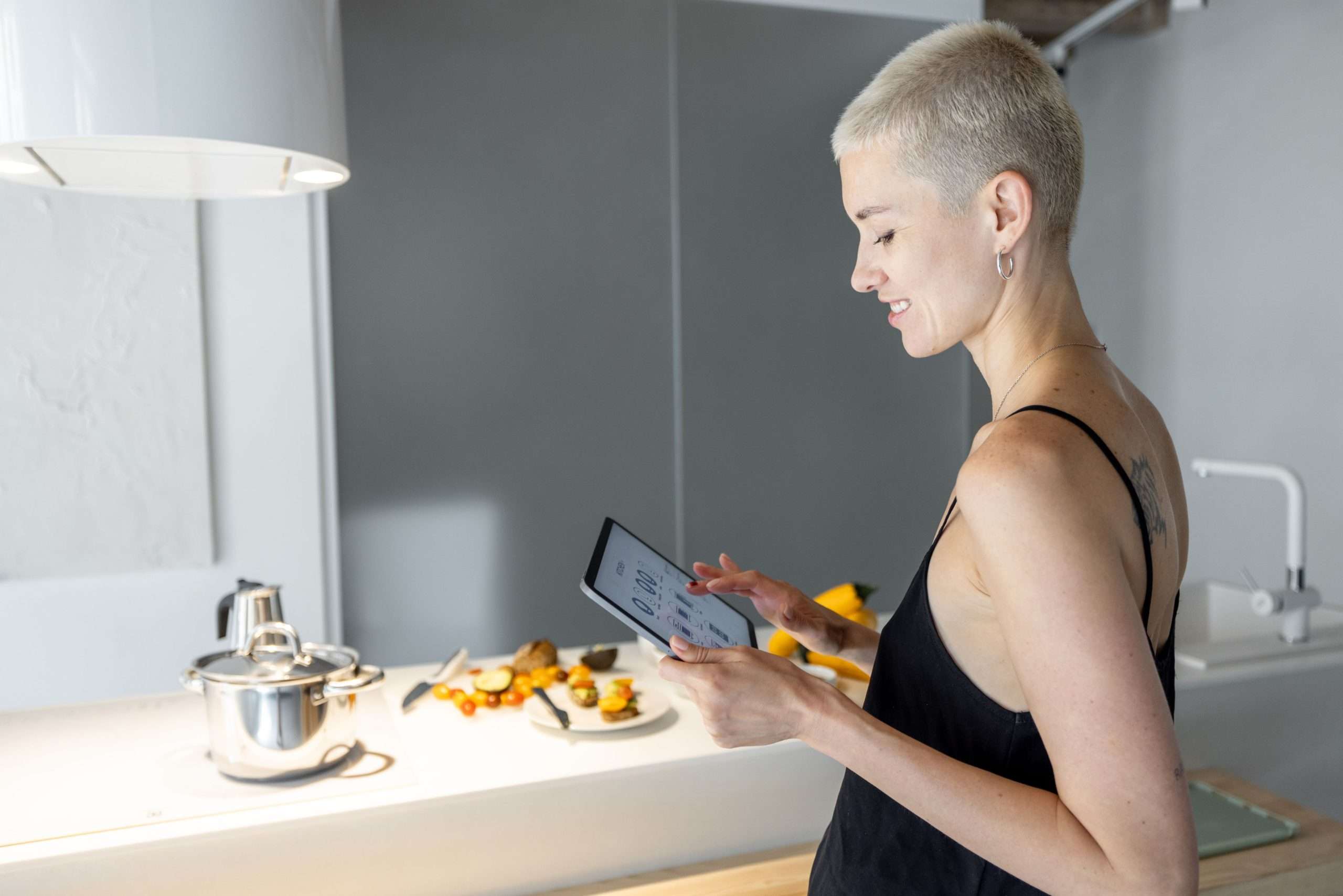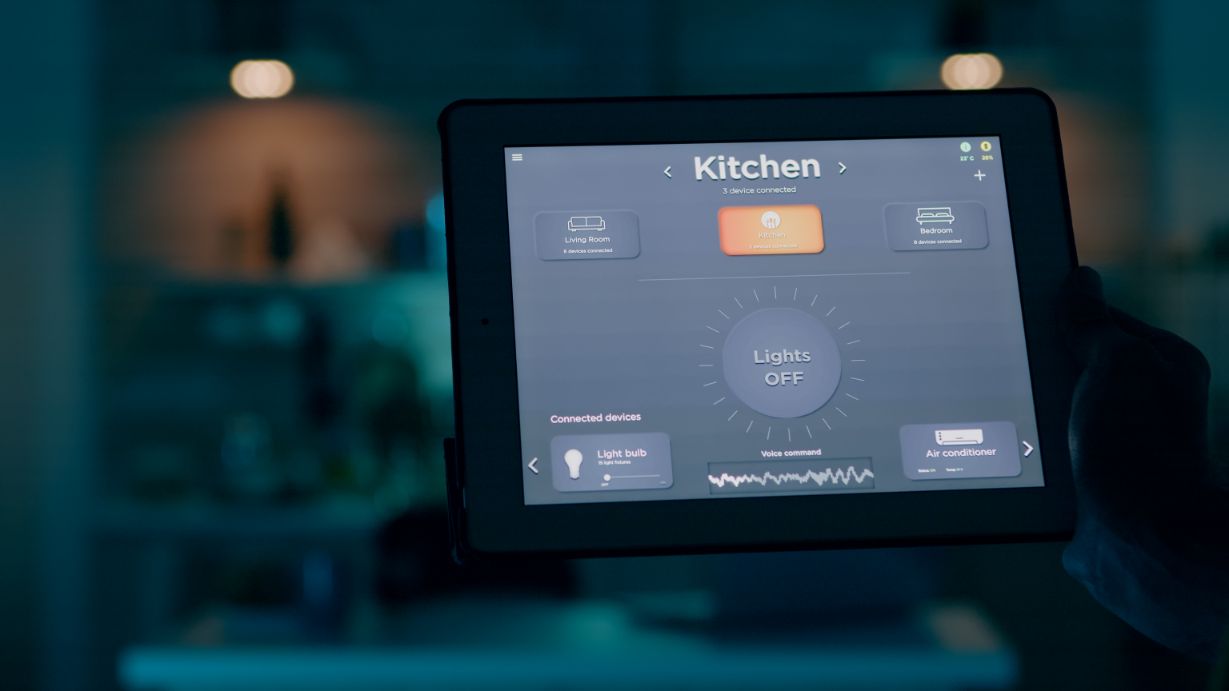In an age where technology continues to transform the way we live, smart homes have emerged as a remarkable evolution in modern living. From simplifying daily tasks to enhancing comfort, how smart home innovations are reshaping our daily lives?
- Smart Home Innovations and Their Environmental Impact
- Navigating Smart Homes with Remote Control
- Personalization in Smart Home Automation
- Adaptable Living in Smart Homes
- Safety in Smart Homes
Smart Home Innovations and Their Environmental Impact

Smart home innovations are poised to bring about a significant environmental impact and reshape our daily lives due to their unique ability to leverage technology for more sustainable living practices. As we face the pressing challenges of climate change and resource depletion, these innovations provide practical solutions that can collectively contribute to a greener future.
One of the most significant ways smart home innovations are impacting our lives is through enhanced energy efficiency. Traditional homes often suffer from wasteful energy consumption due to outdated appliances and inadequate monitoring systems. Smart homes, on the other hand, utilize advanced technologies such as smart thermostats, energy-efficient lighting, and smart appliances to optimize energy usage. These devices adapt to our daily routines, adjusting settings based on occupancy and time of day. For instance, a smart thermostat can learn your schedule and temperature preferences, ensuring that your home is only heated or cooled when needed. This not only saves energy but also reduces utility bills, making it a win-win for both the environment and your wallet.
Moreover, the real-time monitoring capabilities of smart homes empower you to understand your energy consumption patterns in detail. Through dedicated apps and dashboards, you can monitor your electricity, water, and gas usage, enabling you to identify areas where you can cut back on waste. This heightened awareness encourages more mindful consumption habits, leading to a decreased carbon footprint. This newfound awareness naturally encourages more responsible energy usage and prompts behavioral changes that prioritize efficiency.
Smart home innovations also facilitate the integration of renewable energy sources into our daily lives. By seamlessly connecting solar panels, wind turbines, and other clean energy generators to the home’s energy grid, smart homes enable the utilization of sustainable power sources. These technologies reduce dependence on fossil fuels, decrease greenhouse gas emissions, and contribute to a more resilient and decentralized energy system. The ability of smart homes to intelligently manage energy flow, directing excess energy to storage or back to the grid, further supports the transition to renewable energy. This integration not only reduces the environmental impact but also contributes to the long-term sustainability of our energy resources.
Standby power, often referred to as “phantom” or “vampire” power, is the energy consumed by devices when they are turned off but still plugged in. Smart homes combat this issue by allowing users to remotely turn off power to specific devices when not in use. This control helps eliminate unnecessary energy drain and promotes a more energy-efficient lifestyle. Smart homes are equipped to participate in demand response programs, where energy consumption is adjusted during peak demand periods. This not only helps stabilize the energy grid but also rewards homeowners for reducing their energy usage when it matters most. By voluntarily reducing energy consumption during peak hours, homeowners contribute to the overall stability of the energy system and reduce the need for additional power generation, often from less environmentally friendly sources. As the world grapples with the challenges of climate change, embracing smart home technologies is not just a matter of convenience but also a step toward creating a more sustainable and greener future for our planet.
Navigating Smart Homes with Remote Control

Navigating smart homes with remote control is fundamentally reshaping the way we interact with our living spaces. This innovation offers unparalleled convenience, control, and personalization, revolutionizing our daily routines and transforming the very concept of home management.
Traditionally, managing various aspects of a home required physical presence and manual adjustments. With remote control capabilities, smart homes grant us the power to oversee and manage our living environments from virtually anywhere. This shift is particularly impactful in our fast-paced modern lives, where flexibility and efficiency are paramount. For instance, before leaving work, you can adjust the thermostat, ensuring a comfortable temperature upon your arrival. Similarly, you can remotely control lighting, audio systems, and even security devices, creating a welcoming ambiance and enhancing both security and convenience.
The impact of remote control extends far beyond mere convenience. It empowers us with a level of control over our homes that was previously unfathomable. This control isn’t just limited to physical presence; it extends to the palm of our hands through smartphones or the convenience of voice commands with virtual assistants. From adjusting the lighting to creating specific ambiance moods, from locking doors to checking security cameras, every facet of our living space is accessible and adjustable at our command. This newfound control over our environment has the potential to alleviate stress and enhance our sense of security, contributing to an improved overall quality of life.
Moreover, remote control functionality enables us to customize our living spaces to match our preferences effortlessly. Through intuitive apps or voice-controlled virtual assistants, we can create and save personalized settings for lighting, climate, and entertainment systems. A single tap on a smartphone or a voice command can transform a room into a cozy reading nook or a vibrant entertainment hub. This level of personalization not only heightens our comfort but also brings an element of delight and luxury to our everyday experiences.
The integration of remote control in smart homes also has significant implications for accessibility and independence. For individuals with mobility challenges or disabilities, remote control technology can be a game-changer. Tasks that were once difficult or impossible to perform independently, such as adjusting window shades or controlling appliances, can now be achieved with a few taps on a smartphone. This empowerment fosters a sense of autonomy and inclusivity, allowing everyone to fully participate in and enjoy their living spaces.
Furthermore, the environmental implications of navigating smart homes through remote control are noteworthy. The ability to monitor and manage energy consumption remotely encourages responsible energy usage. From turning off lights in unoccupied rooms to adjusting thermostats for optimal energy efficiency, these actions contribute to reduced energy waste and lower utility bills. This level of conscious control over energy usage aligns with the growing global emphasis on sustainability and environmental responsibility. This technology empowers us to interact with our homes in innovative ways, enhancing comfort, security, and efficiency. As remote control becomes increasingly integrated into our routines, it will likely play a central role in shaping the future of home management and lifestyle.
Personalization in Smart Home Automation

Personalization in smart home automation is a transformative aspect that has the potential to reshape our daily lives in profound ways. It is at the forefront of the shift from traditional homes to intelligent living spaces, offering a level of comfort, convenience, and adaptability that was once unimaginable. As technology continues to advance, the potential for personalization to create truly immersive and responsive environments is bound to redefine our concept of home and the way we interact with it.
Traditional homes were designed with static layouts and standardized features, offering limited flexibility for personalization. In traditional homes, adjusting various elements such as lighting, temperature, and entertainment setups required manual effort and often involved compromise. However, with the advent of smart home automation, personalization takes center stage. Imagine walking into a room that instantly adjusts its lighting to your preferred brightness and color temperature, and the thermostat setting to your ideal comfort level. These seamless adjustments not only enhance our immediate comfort but also create an environment that aligns with our emotional states and activities.
Personalization in smart home automation is driven by sophisticated technologies such as artificial intelligence, machine learning, and data analytics. These technologies enable smart devices to learn from our behaviors, understand our patterns, and anticipate our needs. For instance, a smart thermostat can learn when we prefer certain temperatures throughout the day and adjust itself accordingly, ensuring optimal comfort without requiring manual intervention. This level of adaptability not only enhances our physical comfort but also saves time and mental energy by eliminating mundane tasks.
One of the most compelling aspects of personalization in smart homes is the ability to create customized scenarios. With a simple voice command or a tap on a smartphone app, we can orchestrate a range of activities. Whether it’s a “movie night” scenario that dims the lights, closes the blinds, and cues up your favorite film, or a “morning routine” that gradually increases the lights and plays soothing music to wake you up, the possibilities are endless.
The impact of personalization in smart homes extends beyond immediate comfort and convenience. It has the potential to improve productivity and overall quality of life. By seamlessly adapting the environment to match our preferences, we eliminate distractions and disruptions that can hinder our focus. A workspace, for instance, can be optimized for concentration by adjusting lighting, temperature, and noise levels to create an ideal setting for work or study.
Adaptable Living in Smart Homes

The concept of adaptable living in smart homes has the potential to profoundly reshape our daily lives by introducing a new level of flexibility, convenience, and empowerment to how we interact with our living spaces. This innovative approach to home design and management is not just about physical adaptability, but also about adapting to our evolving needs and preferences over time.
Adaptable living in smart homes addresses the ever-changing nature of our lives. Traditional homes were often designed with fixed layouts and functionalities that may not align with our evolving circumstances. However, smart homes equipped with adaptable features can transform their configurations to accommodate different situations. For instance, a room could serve as a home office during the day and transform into a cozy cinema for movie nights. This adaptability eliminates the need for dedicated spaces for every purpose, making the most of limited square footage and allowing our living environments to evolve with us. Here are several reasons why adaptable living in smart homes has the potential to reshape our daily lives:
Flexibility
Adaptable living allows rooms and spaces to serve multiple purposes. This flexibility eliminates the need for dedicated rooms for specific activities, optimizing the use of available space and accommodating the diverse needs of modern living.
Inclusivity
Adaptable living features cater to individuals with varying needs, such as seniors or people with disabilities. These features can include adjustable countertops, wider doorways, and accessible lighting, fostering inclusivity and promoting independence.
Efficiency
Smart homes with adaptable features can proactively adjust settings based on user preferences and daily routines. This enhances convenience by eliminating the need for manual adjustments and streamlining daily tasks.
Reduced Maintenance
With adaptable features, homeowners can avoid constant maintenance or renovation projects. This leads to less disruption and a more enjoyable living experience.
One of the most significant ways adaptable living reshapes our daily lives is by promoting convenience. Smart homes equipped with adaptable features can proactively respond to our needs, optimizing comfort and functionality. Imagine waking up to a home that gradually adjusts its lighting and temperature to match the time of day and your personal preferences. As you move through different activities, the home seamlessly adapts its settings, saving time and eliminating the hassle of manual adjustments.
Adaptable living in smart homes fosters a sense of empowerment. It places control in our hands, allowing us to actively shape our surroundings to match our current requirements. Through intuitive apps or voice commands, we can reconfigure room layouts, adjust lighting scenes, and even change the arrangement of furniture. This level of control not only enhances our immediate comfort but also contributes to a sense of ownership over our living spaces.
The impact of adaptable living extends beyond convenience. For individuals with mobility challenges or disabilities, smart homes with adaptable features provide a newfound level of independence. Doorways can widen, countertops can adjust in height, and lighting can be tailored to accommodate different needs. These adaptations foster a more inclusive environment where everyone can engage with their homes without limitations, significantly improving their quality of life.
From a technological standpoint, adaptable living relies on the integration of smart devices and systems. Walls, furniture, and even appliances can be equipped with sensors and actuators that enable dynamic changes. Machine learning algorithms can anticipate our preferences based on historical data, further enhancing the adaptability of our living spaces.
Safety in Smart Homes

The emphasis on safety in smart homes has the potential to profoundly reshape our daily lives by influencing how we interact with our living spaces, fostering peace of mind, and encouraging a more proactive approach to security. While addressing valid concerns, the integration of safety features into smart homes also offers a range of benefits that enhance our overall well-being and way of life.
The integration of safety measures in smart homes creates a sense of empowerment and control. The ability to monitor and manage security remotely through smartphone apps or web interfaces means that homeowners are no longer bound by physical presence to ensure the safety of their property. Whether it’s checking the status of doors and windows, receiving real-time alerts about unusual activities, or even remotely granting access to guests, this level of control transforms how we perceive and interact with our homes.
The convenience offered by smart home safety features also reshapes daily routines. Simple tasks, such as ensuring that doors are locked or the security system is armed, can now be accomplished with a tap on a smartphone. This efficiency not only saves time but also reduces stress and mental load, allowing us to focus on more meaningful aspects of our lives. The peace of mind that comes with smart home safety solutions has a profound impact on our emotional well-being. Knowing that our homes are equipped with advanced security measures and that we can monitor them even when we’re away brings a sense of comfort and tranquility. This shift in perspective from worry to confidence can influence how we approach our daily lives, allowing us to engage more fully in work, leisure, and quality time with loved ones.
Also, smart home safety can play a role in promoting a more proactive approach to security. Instead of merely reacting to potential threats, homeowners can take preventative measures based on real-time information. For instance, receiving an alert about a door left unlocked can prompt immediate action, reducing the risk of a security breach. This proactive mindset encourages us to be more engaged with our living spaces and invested in their safety. Many devices, such as motion-sensing lights and smart thermostats, not only enhance security but also optimize energy consumption by activating only when needed. This alignment of safety and sustainability further reshapes our daily habits by promoting responsible resource usage.
The evolution of smart homes and their transformative impact on our daily lives is undeniable. From harnessing innovative technologies to mitigate environmental impact through energy efficiency, to the convenience of navigating and controlling our homes remotely, the possibilities are vast. Personalization and adaptable living introduce a new era of comfort, customization, and inclusivity, while smart home safety features provide peace of mind and foster a proactive approach to security. As we stand on the brink of a future where homes are not just static structures but dynamic and responsive living environments, it’s clear that smart home innovations are reshaping the way we live, work, and interact with the spaces we call home. With each advancement, we inch closer to homes that are more intuitive, sustainable, and harmonious with our modern lifestyles.
